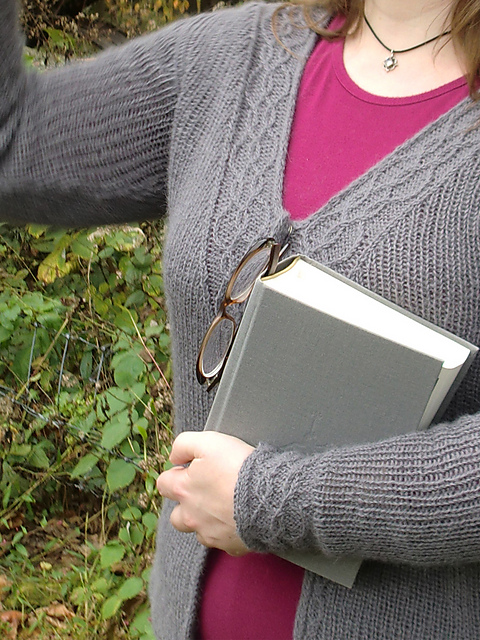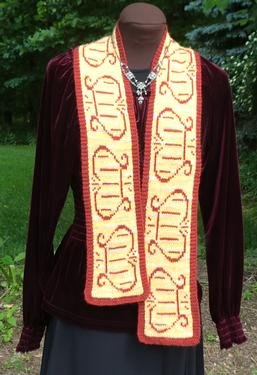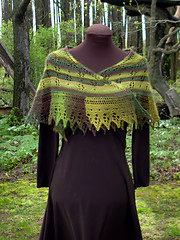 The "Larkspur Lane" Socks are knit in the round from the top down. They feature a ribbed lace cuff and matching accents at the gussets. The lace rib pattern is easily memorized, with a 4-stitch, 4 row repeat which is provided in both written and charted form. The smooth stockinette foot makes these good to wear with shoes or boots, but they also make cozy, comfortable house or bed socks.
The "Larkspur Lane" Socks are knit in the round from the top down. They feature a ribbed lace cuff and matching accents at the gussets. The lace rib pattern is easily memorized, with a 4-stitch, 4 row repeat which is provided in both written and charted form. The smooth stockinette foot makes these good to wear with shoes or boots, but they also make cozy, comfortable house or bed socks.Detailed instructions are included for the Eye of Partridge heel flap, which is especially comfortable for those with wider feet. For a more narrow heel, a plain or slip-stitch ribbed flap could easily be substituted. (Instructions for alternate heel flaps are not included.) Yarn shown: Cascade 220, 100% Peruvian highland wool, 220 yd / 200 m, color 2422 (lavender). Skills: Knit, purl, knitting in the round, following a simple lace pattern, short rows, picking up stitches, grafting. Note: Photo shows size Small on woman’s size 8 foot.
Larkspur Lane: $5.95 from Ravelry or Patternfish
Remember those lace-edged anklets you had when you were 8? These are a grown-up version. The "Bells On Her Toes" Socks are knit in the round from the top down. They feature a ruffled and ribbed cuff which can be worn pulled up with a flare at the top or folded down. The smooth stockinette foot makes these good to wear with shoes or boots, but they also make cozy, comfortable house or bed socks. The majority of the sock is knit in either rib or stockinette, making it a very quick, easy knit - in fact, they were the quickest pair of socks I ever made! From cast-off to blocking, they took about 7 hours. Done in day; can't beat that. They're easy, too - the majority of the sock is worked in either ribbing or stockinette stitch. I like them both folded over and pulled straight up.
The pattern includes detailed instructions for the Eye of Partridge heel flap, which is especially comfortable for those with wider feet. For a more narrow heel, a plain or slip-stitch ribbed flap could easily be substituted. (Instructions for alternate heel flaps are not included.) Yarn shown: Cascade 220, 100% Peruvian highland wool, 220 yd / 200 m, color 7805 (hot pink). Skills: Knit, purl, knitting in the round, short rows, picking up stitches, decreasing, grafting. Note: Photos show Adult Small on woman’s size 8 foot.
The pattern includes detailed instructions for the Eye of Partridge heel flap, which is especially comfortable for those with wider feet. For a more narrow heel, a plain or slip-stitch ribbed flap could easily be substituted. (Instructions for alternate heel flaps are not included.) Yarn shown: Cascade 220, 100% Peruvian highland wool, 220 yd / 200 m, color 7805 (hot pink). Skills: Knit, purl, knitting in the round, short rows, picking up stitches, decreasing, grafting. Note: Photos show Adult Small on woman’s size 8 foot.
Bells On Her Toes: $5.95 at Ravelry or Patternfish


































 Strawberry Diamonds Scarf
Strawberry Diamonds Scarf 
















